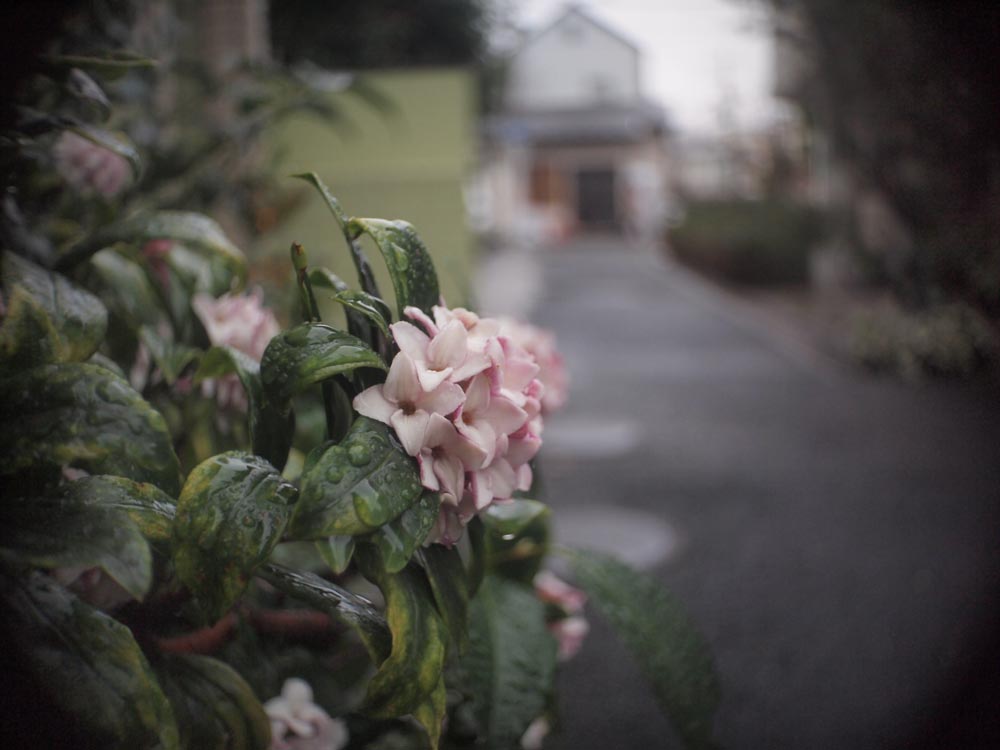

To me it seems, as if the modern Trioplan can be characterized as slightly smoother at open aperture. What can be seen is that the picture quality as well as the bokeh effect is almost identical with regard to both lenses. According to the manufacturer, the titanium design is exclusively handcrafted in Germany. Even the end cover contains a small piece of brown leather with integrated Meyer Optik logo. It has a matt black finish and about the same width as the Fujifilm MCEX-16 extension tube. The lens hood, which can be screwed off, is also made of metal. In contrast to the N design, the aperture opening dates back to the sixties and it is almost circular with regards to all aperture stops. It runs continuously from f/2.8 to f/22 and has 15 lamellae with anti-reflection treatment. The second ring, which is likewise very grooved and massive, is responsible for the aperture. It is now possible to hold the camera body while pressing the focus ring. In comparison to the preceding model, this ring is also more advantageous.
Hugo meyer trioplan 17mm f2.8 manual#
The focus ring runs with appropriate resistance and thus it allows precise manual focusing. It has got a semi-gloss finish, which is relatively resistant to fingerprints and which contains precise and fine engravings. The lens does not only have a noble look, but it feels that way too.Īfter removing it from the good-looking package, one immediately recognizes that it is of high quality.


There was the legend – stored in a foamed material covered with velvet. It is covered with a foil in leather look and contains an imprinted Meyer Optik logo, which is indeed very nice!Īfter opening the package, I was surprised. Out of this package, you pull out the real packaging of the Trioplan. The new Trioplan arrives in a simple black and white package. Moreover, I wondered to what extent it will differ.

Therefore, I was even more curious whether the new and modern Trioplan would stand up to its predecessor model from the sixties, as well as to its previous version. Though, the pictures taken with a Trioplan do have that certain indefinable something! Their particular look and charm turned them into a cult lens. Strictly speaking, it shows a bokeh aesthetics which exactly represents the opposite of modern computerized lenses creating a rather smooth bokeh. It is definitely the bubble bokeh, which is – in accordance to the slogan “love it or hate it” – either strongly appreciated or disliked, because the aesthetics of bokeh is unquestionably still a matter of taste.Īctually, a bokeh is nothing else than an aberration.Īt a certain incidence of light and a suitable background, mirror images of the glass surface as well as of the glass edges are being produced, which superimposes the entire picture. But what exactly makes every Trioplan so special? However, the optical formula remained the same. Furthermore, a high-index lens had been used, which considerably improved the optical performance in comparison to the preceding models. It had a considerably upgraded black camera body as well as an automatic pressure orifice. In 1960 this version was constructed as a totally revised design. My Trioplan is the last old version of the Trioplan N. A that times a lens with an aperture of f/2.8 was a very fast, wide-aperture lens. The length of the camera lens corresponds to the focal length of 100mm. Based on that lens, the Trioplan comprises three lenses further distinguished in three groups. In the thirties a German company called Meyer designed a lens based on the concept of the Cooke triplet (the first lens system that allowed elimination of most of the optical distortion or aberration at the outer edge of lenses).


 0 kommentar(er)
0 kommentar(er)
